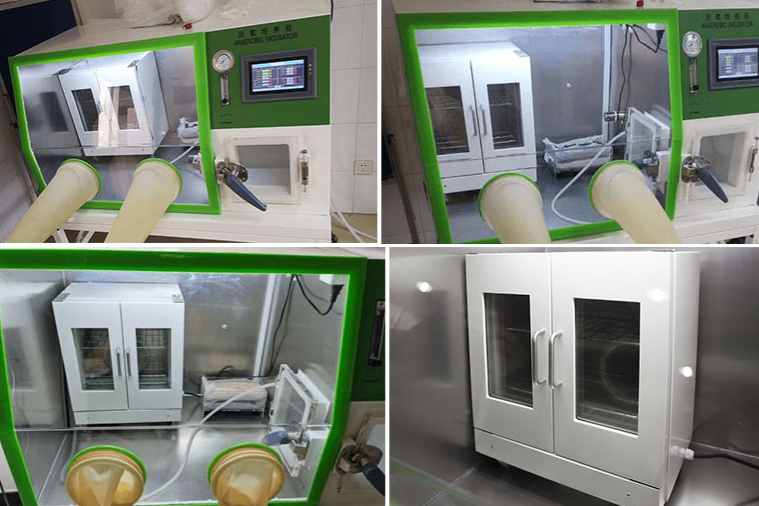Power of Anaerobic Chambers: Enhancing Bacterial Growth
In the world of microbiology, the cultivation of bacteria is an essential practice for understanding their behavior, metabolism, and potential applications. While many bacterial species thrive in the presence of oxygen, there exists a diverse group of microorganisms known as anaerobes that require oxygen-free environments for growth. To facilitate the study and manipulation of these anaerobes, scientists rely on specialized tools such as anaerobic chambers. In this article, we explore why anaerobic chambers are indispensable for bacterial growth, the benefits they offer, and their diverse applications in various fields of research.
The Need for Anaerobic Conditions
Anaerobic bacteria possess unique metabolic capabilities that differentiate them from their aerobic counterparts. These organisms have evolved to survive and thrive in environments devoid of oxygen. Exposure to oxygen can be detrimental or fatal to anaerobes due to the production of reactive oxygen species, which damage their essential enzymes and metabolic pathways.
In addition, certain anaerobic bacteria have specific nutritional requirements that can only be met under oxygen-free conditions. By providing anoxic environments, anaerobic chambers recreate the natural habitats of these bacteria, ensuring optimal growth conditions and enabling researchers to study their physiology, genetics, and biochemical pathways in a controlled environment.
How Anaerobic Chambers Work
Anaerobic chambers, also known as glove boxes or anaerobic workstations, are sealed containers that maintain oxygen-free environments suitable for the cultivation of anaerobic bacteria. They consist of a main chamber, typically made of transparent material, where the experiments take place. Attached to the main chamber is an antechamber or airlock, allowing researchers to introduce or remove samples without disturbing the anaerobic conditions inside.
The key principle behind anaerobic chambers is the removal of oxygen and the replacement of the atmosphere with an inert gas, such as nitrogen or argon. This process is achieved through a combination of vacuum systems, gas purifiers, and catalysts that absorb residual oxygen. The atmosphere inside the chamber is constantly monitored using sensors, ensuring that oxygen levels remain below the threshold that would inhibit anaerobic bacterial growth.
Benefits of Anaerobic Chambers
1. Maintaining strict anaerobic conditions: Anaerobic chambers provide a tightly controlled environment, devoid of oxygen, allowing researchers to grow anaerobic bacteria without the risk of oxidative stress.
2. Enhanced growth of anaerobes: By mimicking the natural anaerobic environment, these chambers promote optimal growth of anaerobic bacteria, resulting in higher yields and improved viability.
3. Protection from contaminants: Anaerobic chambers act as a physical barrier, shielding cultures from external contaminants, including oxygen-sensitive organisms and environmental pollutants.
4. Extended experimentation time: Researchers can conduct experiments over extended periods as the anaerobic chamber preserves the viability of cultures by maintaining optimal growth conditions.
Applications of Anaerobic Chambers
1. Medical and clinical research: Anaerobic chambers play a crucial role in studying pathogenic anaerobes responsible for various infections, enabling researchers to understand their virulence factors and develop targeted therapies.
2. Environmental microbiology: Anaerobic chambers aid in the isolation and cultivation of anaerobic bacteria found in diverse habitats, including deep-sea sediments, hydrothermal vents, and anaerobic digesters, facilitating research on their ecological roles and biotechnological potential.
3. Industrial applications: Anaerobic chambers are utilized in industries such as food and beverage production, wastewater treatment, and biofuel production, where anaerobic bacteria are used for fermentation, bioremediation, and energy generation.
Anaerobic chambers provide an invaluable tool for researchers studying anaerobic bacteria. By creating oxygen-free environments, these chambers offer optimal growth conditions and enable the cultivation, manipulation, and investigation of anaerobes in a controlled laboratory setting. Their applications span various fields of research, offering insights into the physiology, metabolism, and potential applications of these unique microorganisms. As scientific advancements continue, anaerobic chambers will remain a cornerstone in the exploration of anaerobic bacteria, contributing to our understanding of microbiology and paving the way for innovative solutions in medicine, industry, and environmental sciences.
